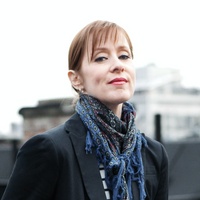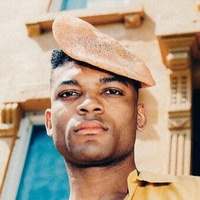On being both a curator and an artist
Prelude
New York-based painter Kimia Ferdowsi Kline earned an M.F.A. in visual arts at the San Francisco Art Institute in 2011 and holds a B.F.A. in painting from Washington University in St. Louis. She has mounted solo exhibitions at Turn Gallery (New York), Marrow Gallery (San Francisco), The Elaine L. Jacobs Gallery at Wayne State University (Detroit, MI), and Quirk Gallery (Richmond, VA), as well as a two-person exhibition at 68 Projects (Berlin, Germany). Her solo show, Elbow Room, was recently on view at Turn Gallery. As an extension of her studio practice, she directs the art programming at Wythe Hotel. Kimia lives and works in New York, NY.
Conversation
On being both a curator and an artist
Painter Kimia Ferdowsi Kline discusses how her work as a curator both informs and enriches her work as a painter, and why following your intuition is often more helpful than what an arts education gives you.
As told to Resham Mantri, 3322 words.
Tags: Art, Curation, Inspiration, Creative anxiety, Multi-tasking, Money.
In both your work and your life, there’s a strong sense of community. How do you cultivate it, both generally and specifically in your role as the curator for art at the Wythe Hotel?
I guess it kind of goes back to my religious upbringing, which is the Baha’i faith. I grew up in the Baha’i community in Nashville, Tennessee, and within our religious community—and our wider community, our neighborhood, and Nashville in general—my parents were always finding volunteer opportunities for us. Service was always a really big deal when we were kids. And the fact that I wanted to go into art was kind of scary to my parents, because I come from a family of doctors, educators, and people who are really interested in giving back and serving the community in a very direct way.
When I decided to go into art, I guess that was just kind of part of my education, like the core fabric of my understanding of what it is to be a useful person in the world. It comes from wanting to create community, and bring people together through what I love the most, which is art.
I didn’t expect that I would have the opportunity to do it so directly when I moved to New York. Curating was something that I just happened upon by accident. Painting was always my focus, both in education and just in in my brain space. So when I started curating at the Wythe, slowly but surely it created this little mini-community within the hotel, and that has extended beyond the hotel.
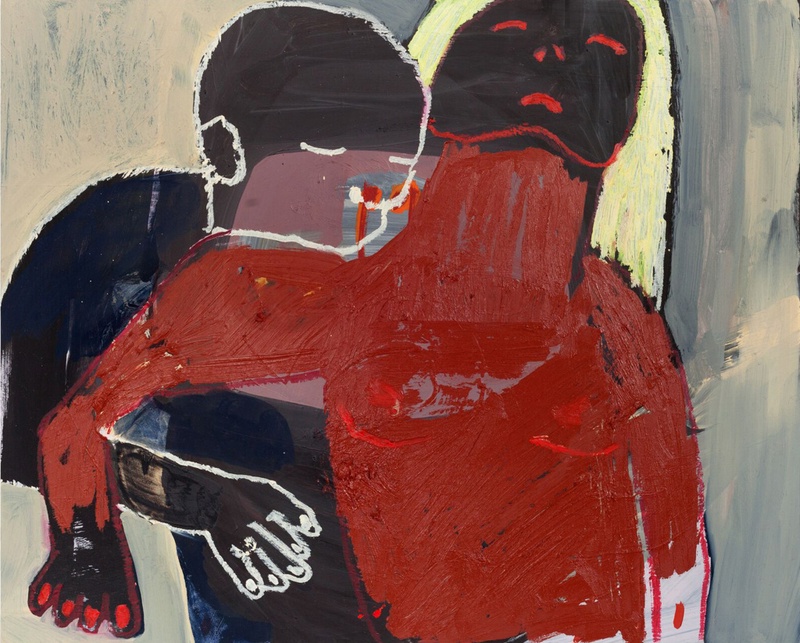
Same Bed, Different Dreams, Oil on panel, 2017
With the Wythe Hotel, what keeps it feeling like a place that’s relevant to culture?
It goes back to the vision of the owners, which was always to make a space that felt relevant within the context of Brooklyn, and that served the community of Brooklyn, and also served an international community wanting to come and experience Brooklyn. Part of the magic there is that the owners are on site, they’re real people, they live in Brooklyn, they raise their kids in this borough, and they’ve lived here most of their lives.
When the hotel opened, no one they hired had any hotel industry experience. It was all artists and creatives. That’s who they populated their staff with. And that’s how I got started at the hotel. I was working at the front desk, and they hired me because I was a painter. When they wanted to start buying art and curating, they hired from within. They hired me. I was in the right place at the right time, but that sort of speaks to their philosophy of growing organically.
You said recently that if artists are interested in creating community, your advice was to find ways of serving other artists. What have you found to be specific ways of serving other artists?
I think curating at the hotel is my main avenue where I feel like I do that, because I buy their work. And there’s a lot of PR that comes with being in the collection. We have a really big following on social media, we get reviewed in Vogue, and Elle, and Travel & Leisure. When you are part of the collection there, people are constantly staying in the room where your artwork is. People from all over the world who might not ever know who you are, or see your artwork, are literally living with it. I’ve had many artists be like, “The fact that you bought my work for this collection let me buy lights for my studio,” or, “The fact that you gave me this cash upfront let me go to my residency in Rome.”
I think that sometimes when you’re an artist, curating can seem like a conflict of interest, but I have found that everything that I give always comes back to me in a different way. It also just feels amazing. It’s like that idea that a rising tide lifts all boats. I feel that way. I’m so happy for the successes of the artists that I’ve worked with, and it makes me really proud that I can go around Brooklyn visiting artists, and bring the work out of their studios and into a public space, and then also give them money for it. It feels like magic. I’ve managed to meet a lot of my idols and a lot of my heroes, and in the process of serving others I’m the one who’s been the luckiest for sure.
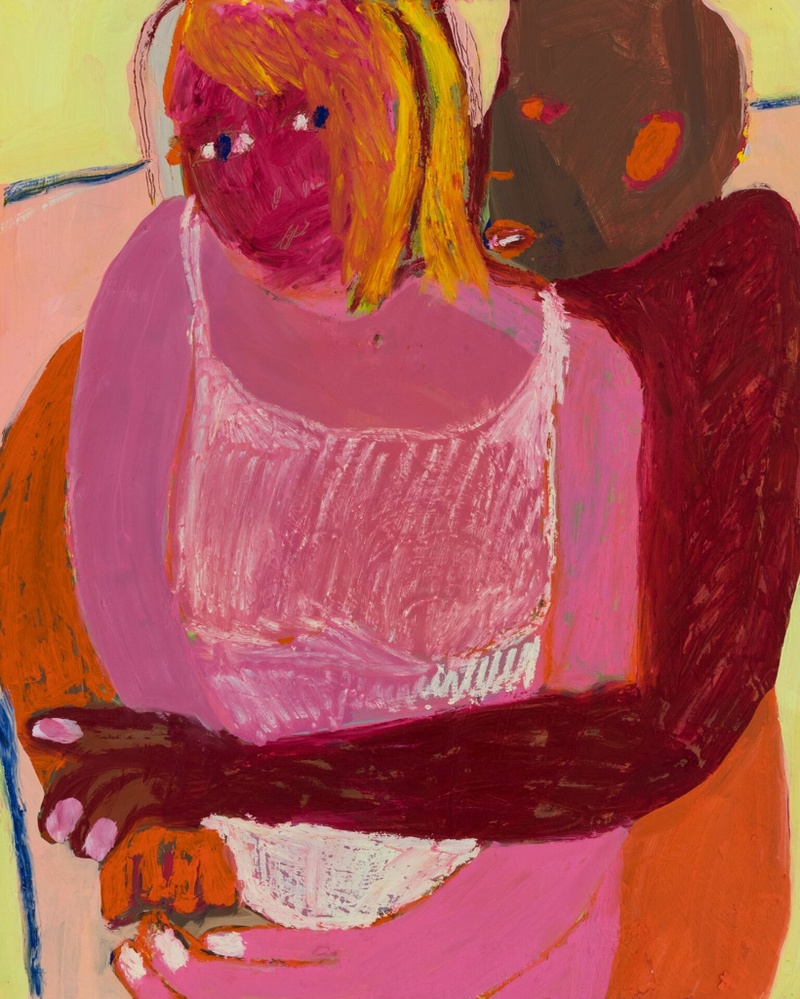
It’s Only Slaughter, Oil and oil stick on panel,2017
Do you feel like you were always someone who could talk to a wide variety of people? Or is it a skill that you have cultivated?
I think that growing up in a multicultural home forces you to code switch, forces you to learn how to do that. I grew up in a Persian Baha’i family in the bible belt of Nashville, Tennessee. So what’s happening at home, the languages I’m speaking, the culture, the food I’m eating, all of this stuff is completely foreign the second I leave my house every morning and go to school. And I think flipping back and forth between those two things as a child forces you to become, for lack of a better word, bilingual in the way that you can respond and interact with people as well as in the way that you can understand things.
I think it also goes back to the Baha’i community, which is such a diverse religious community. I grew up with people from all over the world, even though it was Nashville. I grew up with people from Nigeria, people from Iraq, people from India, people from Hawaii. It’s a global faith. As a youth, you’re exposed to all these different cultures.
My parents also took us traveling a lot, though we can’t go back to Iran, because we’re members of the Baha’i faith, and it’s very persecuted there. My grandfather was executed because he was a member of the Baha’i faith, so my family was blacklisted. I’ve never been able to go back. To sort of fill that hole, my parents were always traveling with us. They traveled with us internationally from the time we were very little. We didn’t live in a huge house, we didn’t have fancy cars, but we spent our summer in Rome, you know? I think also that helps one develop the ability to speak to different people.

Three Mountains, Oil and oil stick on salvaged wood, 2017
Can you speak to how your role as a curator informs your role as an artist, and vice versa?
I think about curating as an extension of my studio practice. Curating is really about finding different artists whose works are in conversation with one another. When you put so and so next to so and so, a new dialogue is created. I think that is just an extension of my creative brain that exists in my own studio with my own work. It has also made me a better artist, just because of the number of studios I’ve visited, and what I’ve learned from other artists. It’s just this dialogue and exchange between artists that curating opens up, and which I’m really grateful for.
You received your masters in painting from San Francisco Art Institute. What did you gain from the formal training, and on the flip side, what have you had to unlearn?
My undergrad was at Wash U., in St. Louis, which was sort of a school for type A’s, you know? The program was really rigid, you had to be in studio from 9:00 AM to 4:00 PM Monday, Wednesday, and Friday, and for your midterms you needed to make eight paintings. It was very production-based, and there was not a lot of room to fail. So from that experience I really gained discipline.
But I felt a little paralyzed, like I had my wings clipped. When you are so afraid to fail, it really stifles your creativity. So that was one extreme. And then for grad school I went to the San Francisco Art Institute, which was the complete opposite. People would show up to critiques with a Post-It note, put it on the wall, and we had to critique that for three hours. It was the complete opposite in terms of feeling relaxed, being okay to fail, with a very loose structure. Somewhere along the way I learned how to fail, but I also maintained that discipline.
One thing I really had to unlearn was that in our current state of art education, conceptual thought and theory is placed above everything. The way that it was taught to me was that you had to have a concept before you created anything, which really sort of murders your sense of intuition, and your sense of joy.Mine anyway.
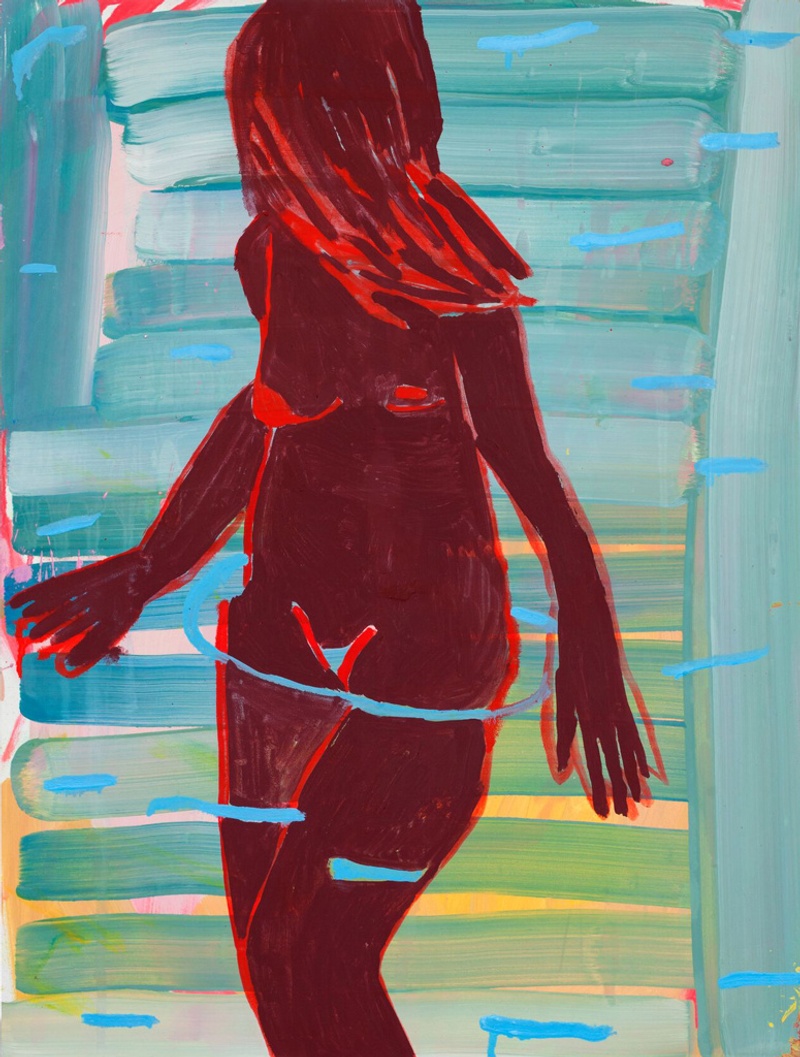
Fire Bath, Oil on panel, 2016
After grad school, I moved to India for a year. I really felt so remote, so protected and unseen, that for the first time I could just be like, “I want to paint a garden, because gardens are beautiful, and they make me feel good.” I started to paint from a place of joy, which was the ultimate no-no in both my undergrad and my grad school. Now that I’ve been in New York for six years, and curated and worked with artists and had my own solo shows, what I’ve come to learn is that what they teach you in school is so unhelpful, and it is not at all the way that artwork is actually made, or the way that people want to experience it. That was a really significant lesson.
It took years to unlearn that stuff. I’m still in that head space sometimes of, “What’s my concept? What’s my concept? I can’t go forward until I know exactly what I’m doing, and why.” Sometimes you just have to shut down that analytic brain, and work from your gut, from a place of intuition, soul, and heart. And then it all makes perfect sense. But that’s a real skill, and it requires fearlessness. And what school really did was instill fear into us, which is not useful in making art. It kills it.
Is there any practical, business-type advice you wish someone had told you when you began?
What I wish I had been told is that gallery representation isn’t the end-all, be-all. When you’re in school, that’s kind of what is pushed onto you: “You have to be represented by a gallery, and then everything else falls into place, and you start making money, and then MoMA buys your work, and done!” And that’s really not the way that it works in our contemporary culture and world.
You really have to be your own PR machine, and you have to help the gallery get the word out. You have to really be an active agent in managing your career. It’s not something that can be outsourced. I think a lot of artists have that misconception, so then there’s a feeling of resentment between them and their gallery. Like, “Why aren’t you doing enough for me?” And that’s just kind of silly.
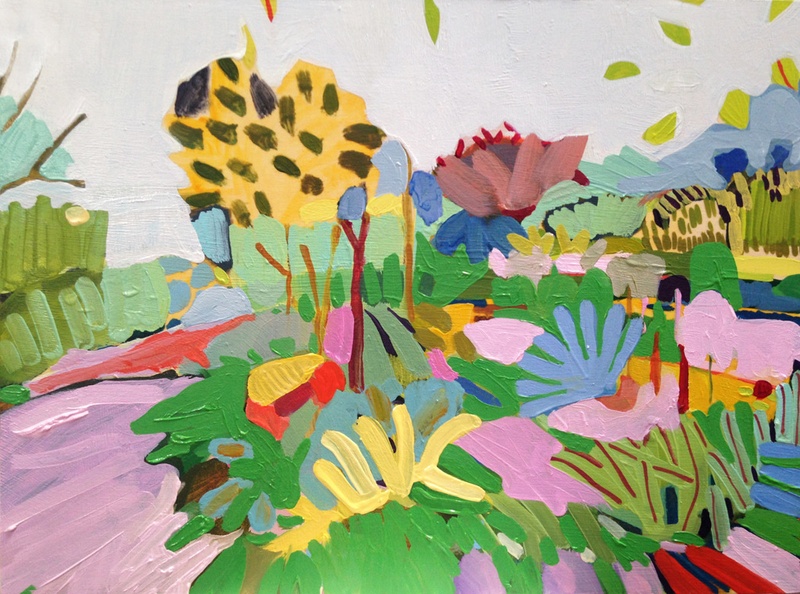
Landscapes for the Hungry, Oil on panel, 2015
My story is really serendipitous. I got a gallery because I was standing in line for tacos at MoMA PS1 and this guy started hitting on me. His friend, who was with him, was like, “Hey dude, she’s wearing a wedding ring,” and he’s like, “You’re married?” And I was like, “For five years.” And then the friend and I became really good friends. She is a curator And she was like, “My friend just opened up a gallery, can you send me your work?” And so I did, and then she sent it to Anika, and Anika liked it, and I got my first solo show in New York.
I think a lot of artists are under the impression that they have to control what’s going to happen to them. And some of the nuts and bolts of being an artist are about letting go of control, and just focusing on making really good work. If you can make really good work, and then share it on your website, or social media, however you get the word out, that’s really what your focus should be. The rest will come to you.
A lot of artists put the cart before the horse. They’re like, “No! I want a gallery first, and then I’ll make really good work.” And it’s like, no, you have to get up and make work, even when you’re not supported, even when no one is looking at you, even when no one cares. The nuts and bolts of being an artist are about being okay to go it alone, and having faith that something will happen. I don’t know if that’s useful at all, that’s just what I’ve found to be true.
I think that’s really useful, actually. Much better than focusing on networking or something.
Yeah, it doesn’t work. In the art world, people hate that.
When you meet someone, it may not seem to have anything to do with your work, or your life, or your career path, but if you’re open to just having a conversation, certain things can happen.
It’s so cheesy, but it’s like The Secret, the book that Oprah is always talking about. You put something out there in the universe, and if you’re genuine, and hardworking, and kind, good things happen. That’s it. But, you have to be a good artist, too. You have to actually make good work, and there’s so much laziness in the world. There are so many lazy artists who just want to be famous, or just want the façade of being an artist, and it’s not a glamorous life. It’s a lonely life. It’s hard. You have to scrape together your income. I didn’t have health insurance for years. There’s nothing glamorous about it. You have to really do it because you love it, and that opens doors.
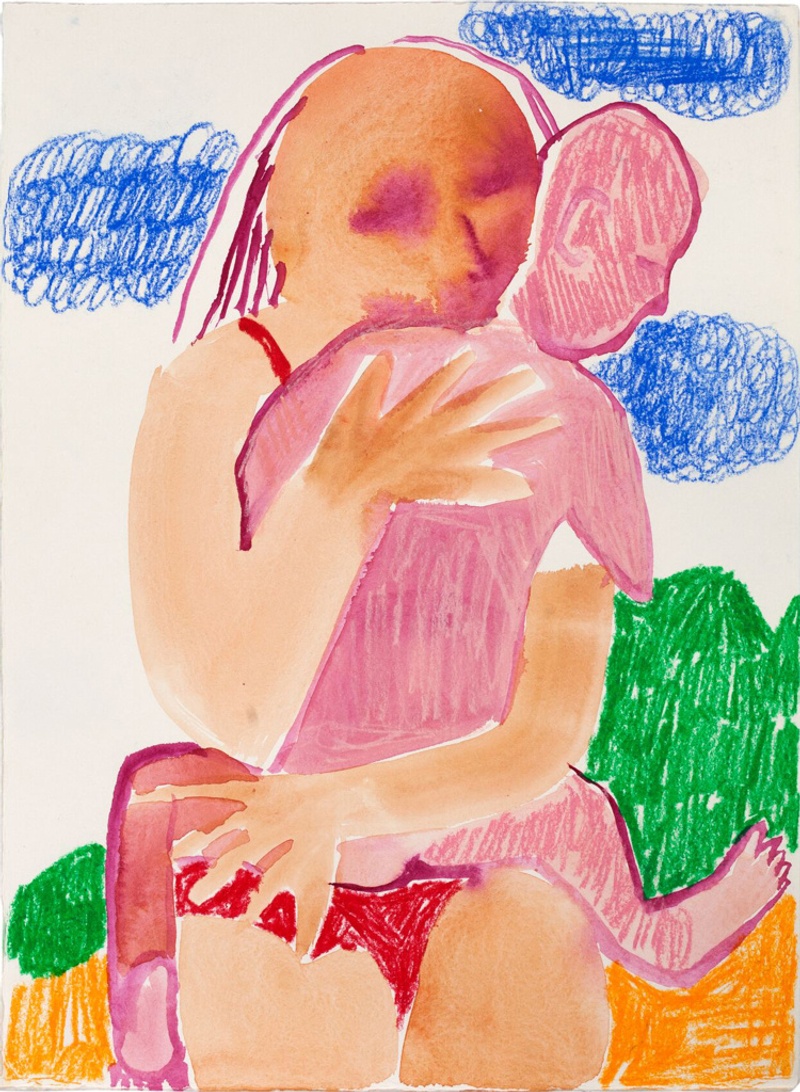
Daughers, Mixed media on paper, 2016
Creating can also be a way of healing, or of communicating with yourself and others. It can help you through pain or joy.
Louise Bourgeois always talks about that in her own work. She says, “You know, my emotions are disproportional for my size,” because she was a teeny, tiny woman, but she was very intense, and had these huge emotions. She said, “I can’t handle them, they can’t stay within me, I have to release them, and they go into the sculptures.”
And I feel the exact same way about my work. There’s a level of pain and emotional longing and you can’t keep that in. Different people have different ways of expressing themselves, you know? I didn’t grow up in a particularly emotional family. You were allowed to be happy and that was it, so art was always an avenue where I could lay these thoughts or burdens to rest. I could transfer the emotions into a painting, or into an image, or into an object. And that’s how I think about every piece that I make. Sometimes what I’m transferring is joy, or celebration, or play, and sometimes it’s devastation, or longing, or sadness. But it’s definitely always a process of healing.
You used a technique in some of your earlier works where you could see the previous work underneath. They become these layered paintings where we can see the process in your work. How did you come to that technique?
In school I was obsessed with creating these really perfect, beautiful, smooth finishes. One of the famous French painters coined this term called “a licked surface.” It looks like the painting has been licked. For many years that was sort of the effect that I was going for. Something happened to me when I moved to New York, a grittiness maybe, and I was just disgusted by that kind of painting. I couldn’t look at any of the paintings I had made in that way. I just wanted to leave all of the bumps and lumps and mistakes. It also came from me thinking, “This is a crappy painting, but I don’t want to throw this panel out, so I’m just gonna paint over it.” Instead of sanding it down, I was like, “Well, this texture could actually be really interesting,” and so that was another thing that came from experimentation and necessity. To just reuse what I had, and to be thrifty. This is what led me to wanting to paint on discarded wood, which has such a beautiful texture to it that is very raw and rugged. These surfaces started feeling sculptural, in their lumpy waxiness, and then that feeling of a sculptural surface translated into making actual sculptures.
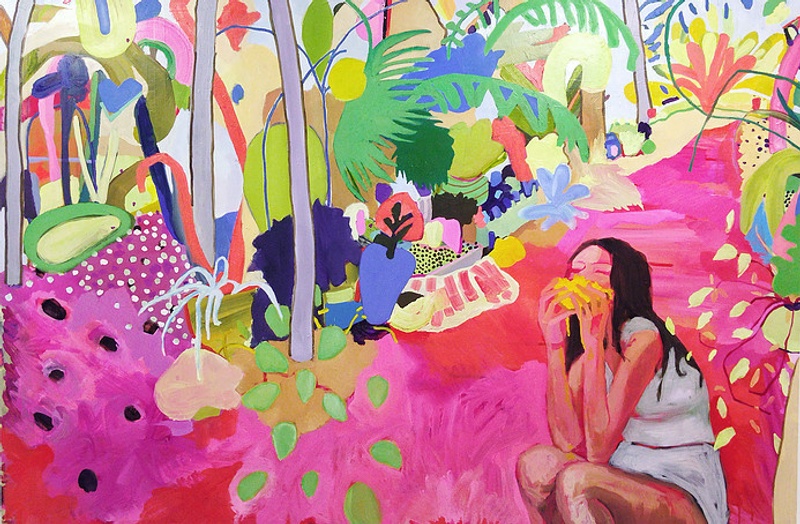
I Come Bearing Mangoes, Oil on panel, 2015
Both in your work as a curator and as an artist you’ve had to be able to translate the meaning of your work—or the work of other artists—into words. How valuable do you feel that skill is? And has it become easier to talk about your work?
I’m really bad at it. That’s the honest truth. My favorite part of becoming more and more professional in my artistic career is that, once you get to a certain level, other people write about your work. My favorite insights have always come from others. I’m not a word person. I love good writing and I’m a literature nut—I almost double majored in literature. I love writing, I’m just not good at it, and for a long time I would try so hard to write my artist statements and decipher things with words. I had one painting teacher, one of my favorite mentors and teachers in grad school, who said, “Kimia, why are you beating yourself up about this? If you were good at being a writer, you would be a writer, not a painter.”
Matisse said, “The first step to becoming a good painter is you have to cut off your tongue.” It’s this idea of using all of your energy to communicate something visually. I can articulate an artist statement on a very basic level, but I don’t feel like I am the best spokesperson for my work, at all. The writers that I have been so fortunate to work with have given me verbal insight into my own work that, if I had been staring at it and meditating on it for a hundred years, I would not have come to.
The answer is, I’m not good at it. I don’t think many artists are. Some are, and they’re lucky, but the vast majority of artists get their words from writers who do it professionally. I don’t think it’s fair to ask artists to do everything. And that’s kind of the culture that we’re in, like you have to write about it. There was a point where I was just like, “I’m not doing it anymore. I’m focusing on making the work, and the better the work is that I make, the better the writing about it will be.”
Kimia Ferdowsi Kline recommends:
- Breaks from technology
- Sending thank-you notes
- Spending time in nature
- Buying art you love
- Using your talents to serve others
- Name
- Kimia Ferdowsi Kline
- Vocation
- Painter, Curator
Some Things
Pagination
